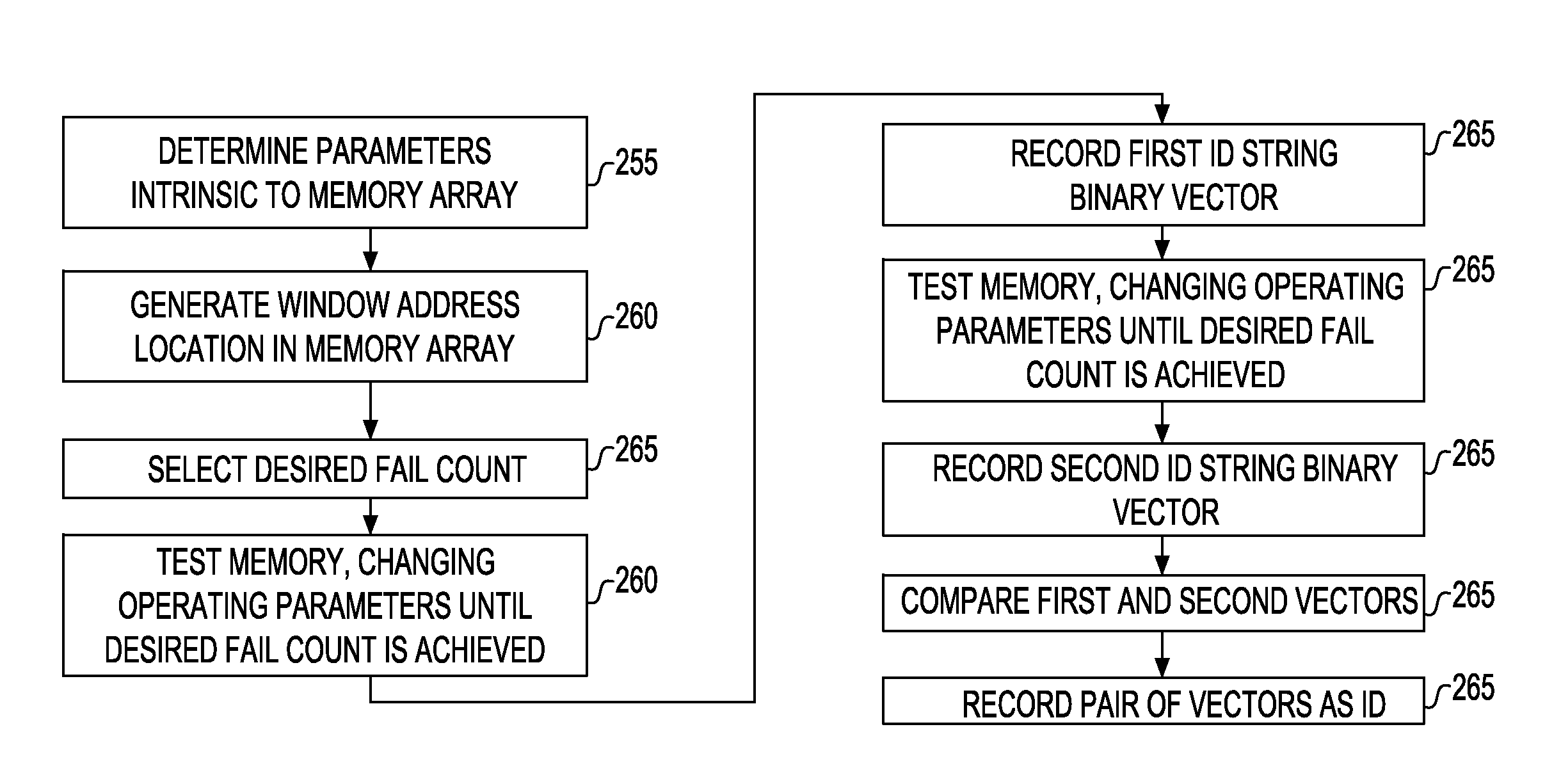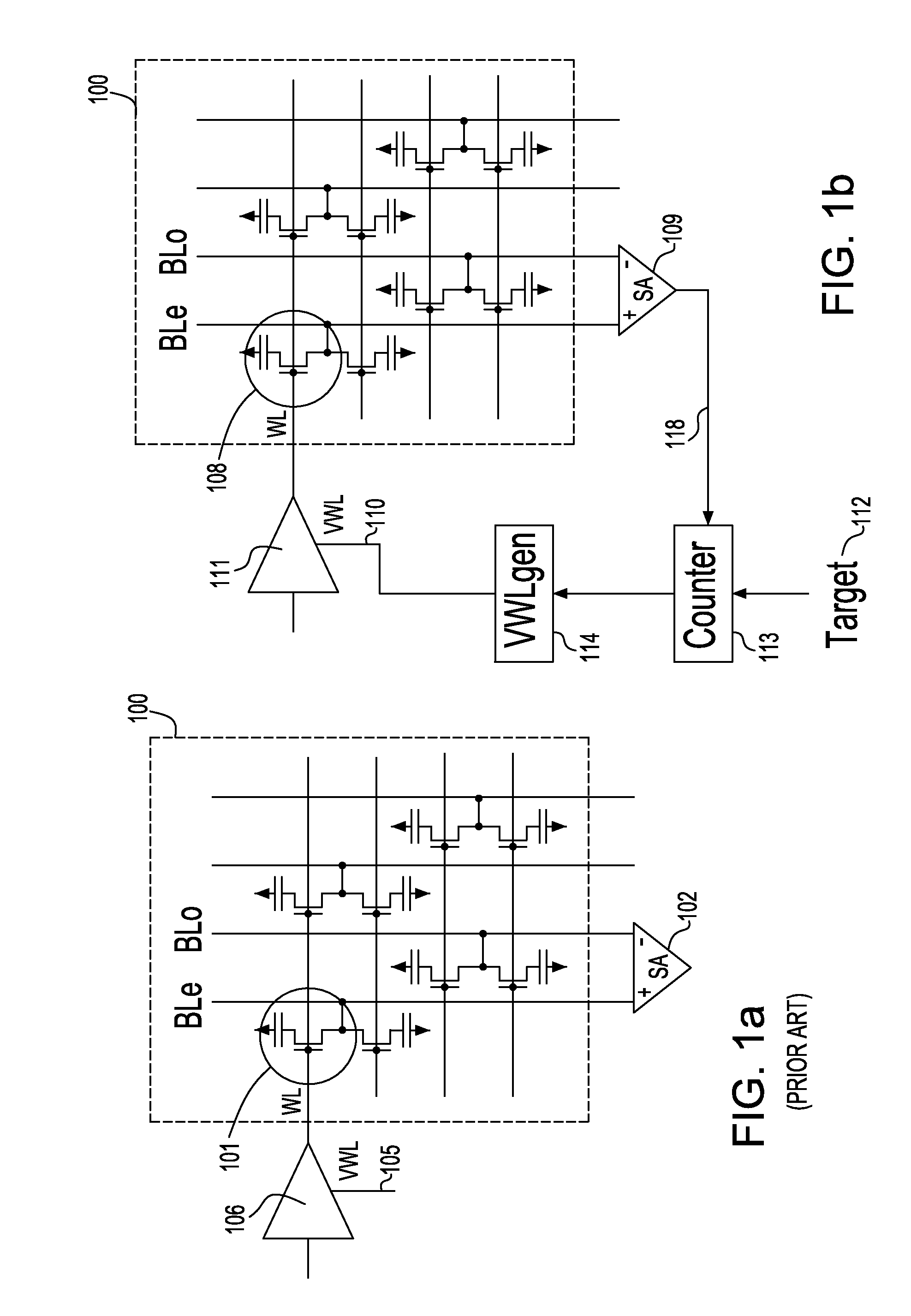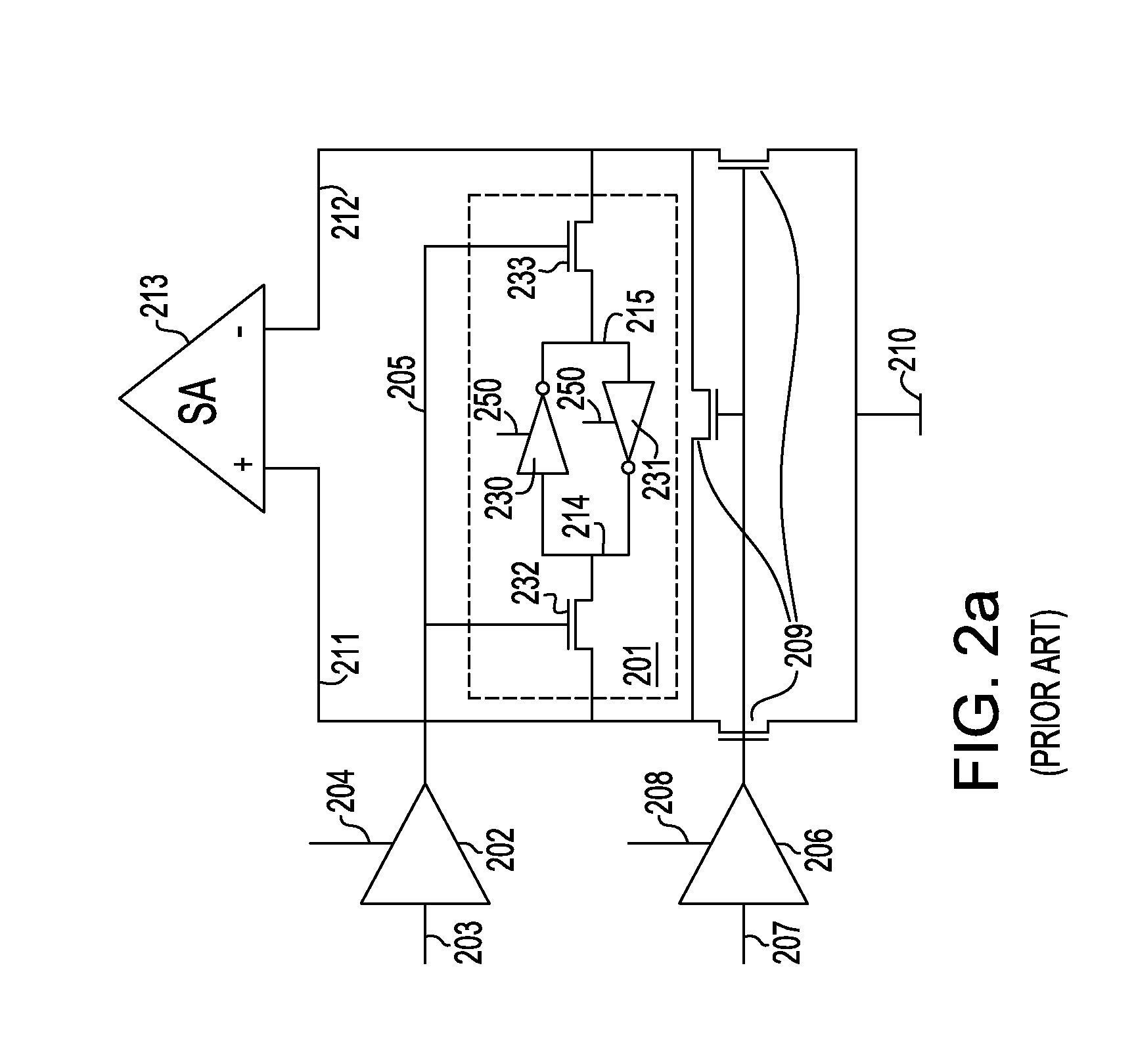Retention Based Intrinsic Fingerprint Identification Featuring A Fuzzy Algorithm and a Dynamic Key
a fingerprint identification and fuzzy algorithm technology, applied in the field of chip identification, can solve the problems of increasing the system overhead to manage long vector patterns for identification, unable to identify the correct chip, or incorrect identification, etc., and achieve the effect of improving id security
- Summary
- Abstract
- Description
- Claims
- Application Information
AI Technical Summary
Benefits of technology
Problems solved by technology
Method used
Image
Examples
Embodiment Construction
[0037]Detailed embodiments of the present invention are disclosed herein. However, it is to be understood that the disclosed embodiments are merely illustrative of the invention that may be embodied in various forms. In addition, each of the examples given in connection with the various embodiments of the invention is intended to be illustrative, and not restrictive.
[0038]Referring now to FIG. 3, a flow chart is shown wherein the steps illustrated therein may be used to realize an embodiment of the invention.
[0039]In step 255, parameters intrinsic to the memory array are determined, followed by step 260 wherein a window address location in the memory array is created. Next, in step 265, a predetermined failcount is selected to be followed in step 270 by having the test memory change the operating parameters until a predetermined fail is reached. In step 275, a 1st ID string binary vector is recorded and followed in step 280 by selecting a predetermined 2nd failcount. In step 285, th...
PUM
 Login to View More
Login to View More Abstract
Description
Claims
Application Information
 Login to View More
Login to View More - R&D
- Intellectual Property
- Life Sciences
- Materials
- Tech Scout
- Unparalleled Data Quality
- Higher Quality Content
- 60% Fewer Hallucinations
Browse by: Latest US Patents, China's latest patents, Technical Efficacy Thesaurus, Application Domain, Technology Topic, Popular Technical Reports.
© 2025 PatSnap. All rights reserved.Legal|Privacy policy|Modern Slavery Act Transparency Statement|Sitemap|About US| Contact US: help@patsnap.com



